
The healthiest cooking oils
It may seem like your supermarket shelves are filled with more cooking oil options than you’ve ever seen before. Vegetable, canola, and extra virgin olive oils (EVOO) are like culinary dinosaurs next to the seemingly modern avocado or flaxseed oil. With so many choices, and so many trends in the health food community, it’s hard to know which is the healthiest cooking oil to put in your cart.
“There are ‘health halos’ associated with some cooking oils and opposite perceptions about others, not all of which are warranted,” says Kris Sollid, RD, senior director of nutrition communications of the International Food Information Council (IFIC). A health halo is the impression that a specific food is really good for you despite a lack of factual information to back up the idea.
“Where these beliefs stem from is anyone’s guess, but I wouldn’t rule out connotations of an oil’s food source, which may, in part, be influenced by the more exotic regions of the world that some of these foods are native to,” Sollid adds.
With this in mind, which healthiest cooking oil should you reach for when prepping a meal? Our food experts weigh in with multiple options for every palette.
(Related: What Nutritionists Need You to Know About Smoke Point and Cooking Oils)

Canola oil
For starters, Sollid explains that all cooking oils are 100 percent fat. “Just like with any food that contains fat, all cooking oils contain a blend of different types of saturated and unsaturated fats,” he says. “While some cooking oils are higher in certain types of fat, no oil contains only one type. A cooking oil is considered healthy if it’s high in mono- and polyunsaturated fats.”
For this reason, he points to canola oil as one of the healthiest cooking oils because it offers blends of heart-healthy fats (as do olive and soybean oils). “Canola oil is also a great source of monounsaturated fatty acids (MUFAs),” says Sollid. “Compared to olive oil, canola oil contains less MUFA [monounsaturated fatty acids], but less saturated fat and more alpha-linolenic acid (ALA) omega-3 fat. Canola oil has the least saturated fat and the most ALA omega-3 fat of the common cooking oils.” According to the National Institutes of Health’s Office of Dietary Supplements, ALA is an essential fatty acid. This means that your body can’t produce it and it must be consumed through what you eat and drink.
The smoke point of canola is 400 degrees Fahrenheit, which makes it ideal to use when cooking something at a high temperature (think grilling over high heat). The smoke point is what happens when an oil or fat begins to “smoke,” and starts to break down, perhaps giving off an unpleasant smell or taste.
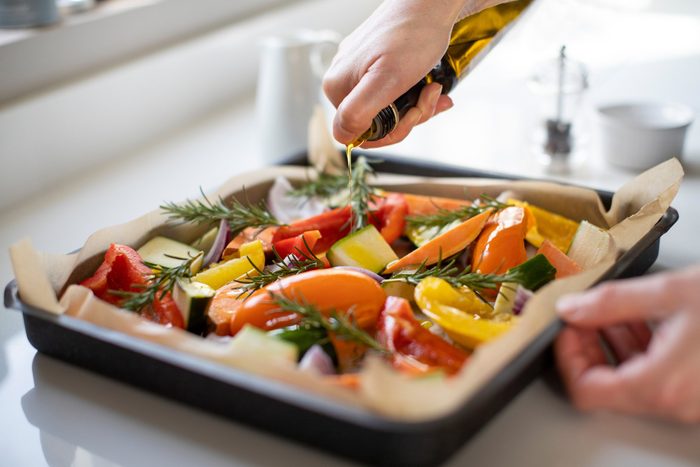
Olive oil
When you’d like your oil to add a little flavour to your food, olive oil is one of the most recommended options. But it’s important to keep in mind that its smoke point is lower than that of canola oil, so consider how you’ll be using it first and at what temperature. “Olive oil varieties have a lower smoke point but provide bigger flavour, so they are best suited for direct consumption in things like oil and vinegar salad dressings and in lower temperature cooking techniques like sautéing, pan frying, and baking,” says Sollid.
He also notes that olive oil is known for its high MUFA content, but also provides a small amount of ALA, the plant form of an especially beneficial type of polyunsaturated (PUFA) omega-3 fat. One thing to remember, just because an oil is deemed “healthy” doesn’t make it a health food. “Cooking oils are calorie dense — one tablespoon contains about 120 calories and one cup contains about 1,900 calories,” says Sollid. “Therefore, advice focuses on using them, even the healthiest varieties, in moderate quantities. A little goes a long way.”
Try: Maison Orphée’s Cold Pressed Olive Oil Extra Virgin ($14, houseofwellness.ca).
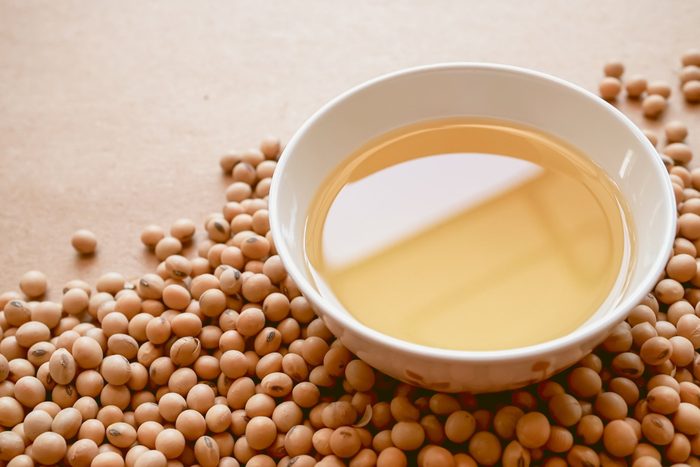
Soybean oil
Sollid says that another fine choice in the world of cooking oils is oil derived from soybeans. If you don’t think you’ve ever used soybean oil before, think again. It’s often labelled simply as “vegetable oil.” It contains less MUFA than olive oil, but more PUFA and more ALA omega-3. “Of these three cooking oils, only canola oil contains more ALA than soybean oil,” he says.
Can’t decide if the dish you’re preparing can benefit from soybean oil? According to Sollid, it’s pretty versatile to use because it has both a neutral flavour and a high smoke point at 450 degrees Fahrenheit.
(Related: Is Eating Soy Good or Bad for You?)
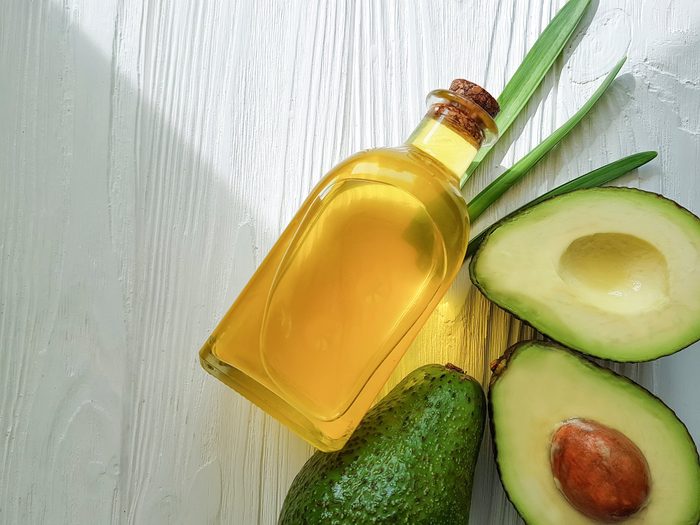
Avocado oil
Avocado oil is one of the newer cooking oils in terms of consumer popularity, although a 2019 study published in the journal Molecules admits that more research needs to be done to confirm its potential health benefits. Still, chefs and knowledgeable home cooks like it for a few very important reasons.
“For me, the benefit of avocado oil is primarily its high smoke point and neutral flavour,” says Abbie Gellman, RD, and chef at the Institute of Culinary Education in New York City. “EVOO has a lower smoke point, which means it breaks down at a lower heat level compared to avocado oil.
When an oil breaks down during cooking, the flavour will be off and carcinogens form. Because of this, avocado oil is better suited for high heat cooking like stir frying and sautéing.”
Try: Primal Kitchen’s Avocado Oil ($16, houseofwellness.ca).

Safflower oil
You’re probably seeing a recurring theme here — our experts put a lot of emphasis on the smoke point of a particular oil, and with good reason.
Kelly Springer, a registered dietitian and certified dietitian nutritionist in Skaneateles, New York, will choose safflower oil when cooking vegetables on high heat or searing meats because it has a high smoke point of 510 degrees Fahrenheit. “It won’t break down when cooked at high temperatures,” says Springer. “This is critical since oils that are cooked at high heat with a low smoke point, such as walnut oil, will degrade and turn into trans-fat. Safflower oil is high in omega-6 and has a neutral flavour.”
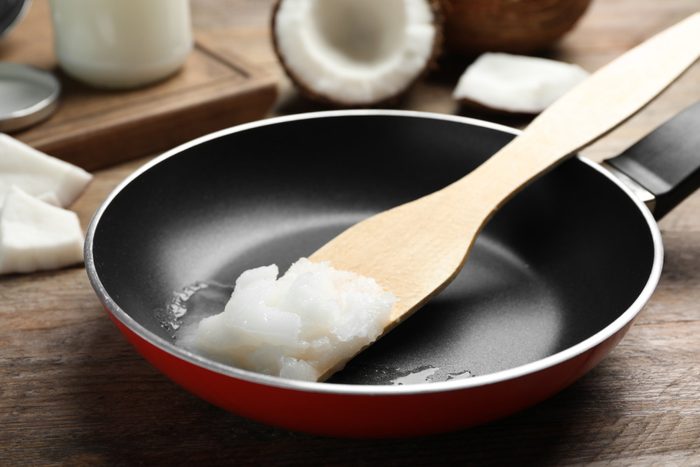
Coconut oil
For a while it seemed like coconut oil was promoted as a must-use for everything — from cooking to skin care. But dietitians say that not everything is as it seems with this popular oil. “Coconut oil is thought to be somewhat more beneficial to heart health than animal fats like butter, but not as heart-healthy as cooking oils that are made from plants like olive, canola, or soybean oil,” says Sollid.
He explains that coconut oil is mostly saturated fat, more so than other cooking oils from plants. With that being said, not all types of saturated fats impact health in the same way. “Coconut oil has been shown to raise LDL cholesterol (the ‘bad’ kind of cholesterol), while also raising HDL (the ‘good’ kind) more than other types of saturated fat, particularly when it replaces carbohydrates,” says Sollid.
His advice? Coconut oil shouldn’t replace a significant amount of other plant oils in your diet. “If you enjoy the flavour of coconut oil, consider using it in place of butter or shortening, or paired with other cooking oils, keeping in mind that only small amounts should be used,” he says.
Try: Organic Traditions’ Coconut Oil ($14, houseofwellness.ca).
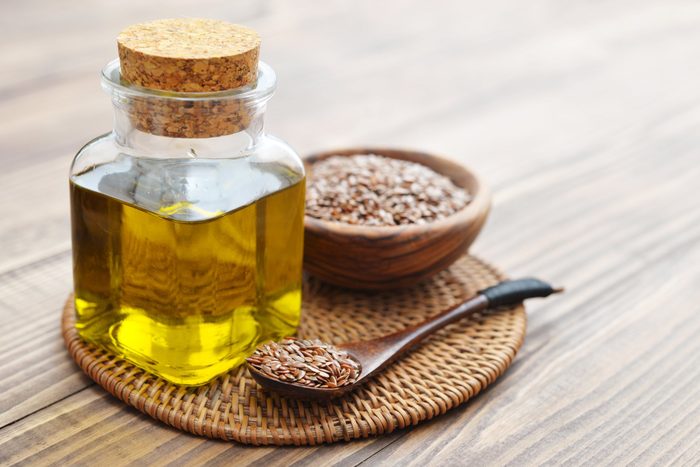
Flaxseed oil
The health benefits of flaxseed have drawn a lot of attention from the wellness community. For example, a 2020 review of clinical trials involving flaxseed, published in Combinatorial Chemistry and High Throughput Screening, finds it has potential in the fight against heart disease, diabetes, hypertension, and more.
But what about flaxseed oil? According to Gelman, flaxseed oil is extremely delicate and should be stored in the fridge and never, ever heated. “It can be used as a drizzling finisher over roasted or cooked vegetables, salads and oatmeal,” she says.
(Related: 10 Healthy Reasons to Eat More Flaxseeds)
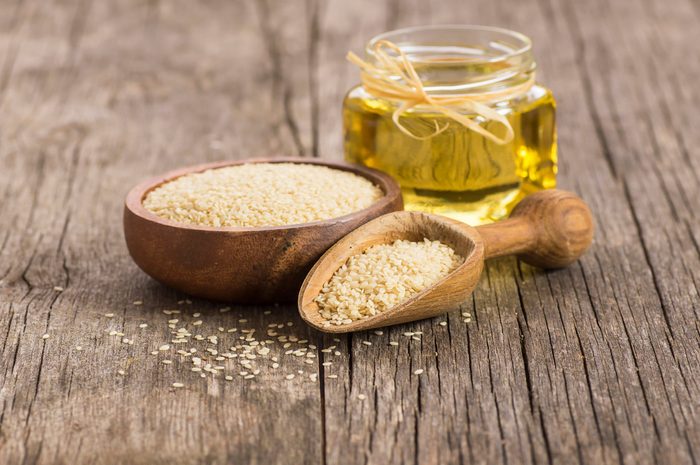
Sesame oil
When you’re looking for an oil that goes big on flavour, it’s hard to beat sesame oil. Springer lauds its bold nuttiness, noting that it pairs well with rice vinegar, making it a staple in Asian-inspired cooking. However, it’s best to use it in small amounts to get that flavour for your dish, and the flavour’s not so strong as a heated oil.
“Keep in mind, sesame oil needs to be refrigerated,” she says. “With a smoke point of 350 degrees Fahrenheit, sesame oil is considered to have a medium smoke point, making it preferred for low-heat baking or light sautéing. If using high heat, opt for another oil such as safflower or avocado oil.”
Try: La Tourangelle Toasted Sesame Oil, ($14, houseofwellness.ca).
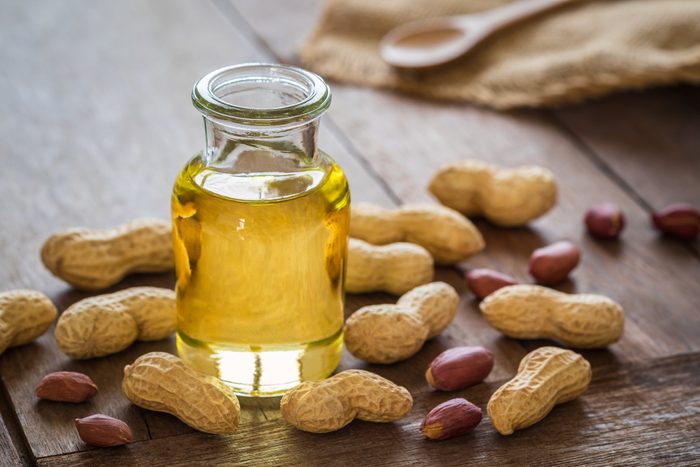
Peanut oil
Peanut oil, a nut oil also known as groundnut oil, is commonly used in Asian dishes. Its neutral taste makes peanut oil an ideal cooking oil, especially to use when frying. With a smoke point of 450 degrees Fahrenheit, it makes it a good oil to use at high heat for stir fry and sautéing. However, it may not be healthier than the other cooking oil options because it’s chemically processed, which diminishes its mineral value.
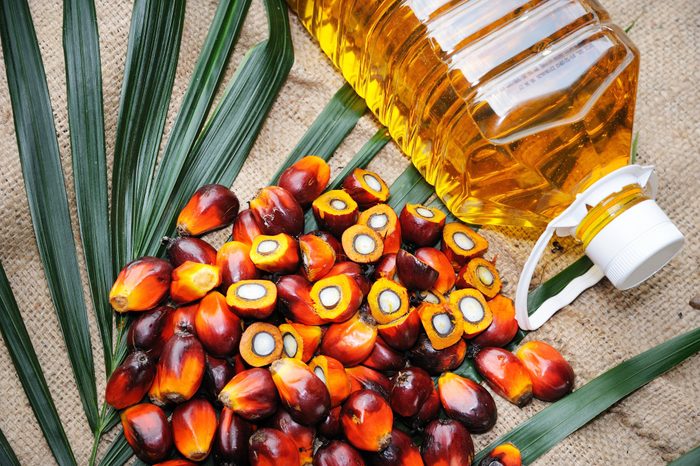
Palm oil
Like peanut oil and canola, palm oil is ideal for deep frying since it’s made of saturated and monosaturated fats. A product of the oil palm tree, palm oil is commonly used in West African food and curries.
Similar to peanut oil, it’s neutral in taste and has a smoke point of 450 degrees Fahrenheit, making it suitable for cooking with high heat. You may also see red palm oil, which refers to unrefined palm oil that has a red-orange hue to it.

Cooking oil tips
There are dozens of other oils just waiting for a space in your kitchen cabinet. Which ones should you steer away from? The answer is complicated.
“I don’t like to say there’s anything we should always avoid, except perhaps trans fats in the food supply,” says Maya Vadiveloo, an assistant professor in the department of nutrition and food sciences at the University of Rhode Island. “There might be a recipe that calls for coconut oil and it will enhance the flavour of that recipe, even though it is higher in saturated fat and not as health-promoting as other oils. I don’t advocate a complete restriction of anything from people’s diets for the most part, aside from trans fats.”
Vadiveloo is less concerned about which oils you’re using and more concerned about how much is being used and why. “It’s a concern when people think something is particularly health-promoting and use it in whatever quantity they want,” she says. “Even if it is beneficial to preferentially use oils high in unsaturated fats, you still need to keep energy balance in mind and not over consume them.”
